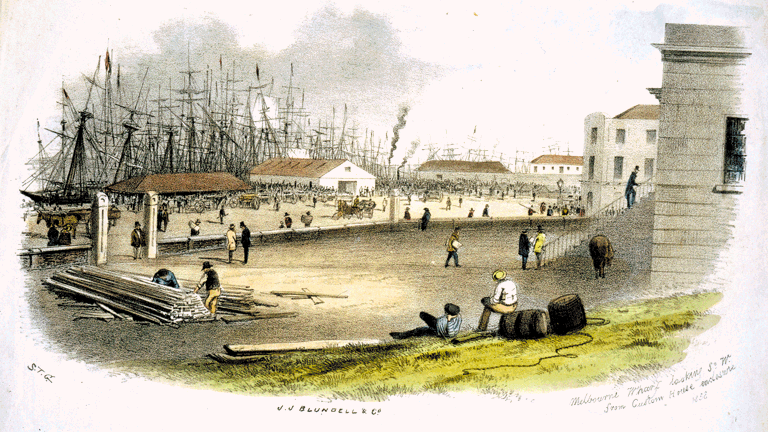
History and Change
The Victorian environment encountered by Frederick McCoy and his artists was already undergoing extraordinary change.
The indigenous Kulin people had been forced from Melbourne, many having been relocated to Coranderrk Mission in the Dandenong Ranges. Across the colony traditional burning regimes had also been disrupted, irrevocably altering ecological systems.
Fertile grasslands adjacent to Melbourne now supported flocks of sheep and cattle, with sensitive ephemeral vegetation trampled into decline. Rolling hills and gorges had been picked over by gold prospectors and woodlands felled for building materials and fuel.
Melbourne's spreading rail network resulted in satellite towns and villages across the land. While East Gippsland's forests still presented a tall and apparently impenetrable barrier, the land had been surveyed and bundled up for various uses by the time it yielded the specimens illustrated for the Prodromus.
Transport by sailing ship and steamer was often more efficient than the colony's unmade roads. Paddle steamers plied their trade along the Murray River, but relied on rapidly thinning bands of River Red Gums along their banks.
The impact of onshore whaling and sealing that immediately preceded official British settlement aside, the marine environment was initially more resilient than the land. Fish were abundant and many species that are now scarce or locally extinct could still be caught with ease in Port Phillip Bay.
150 years later the impact of fishing, forestry, farming, mining, clearing, urbanisation, introduced animals, altered hydrology cycles and changes to nutrient and fire regimes have permanently disturbed both the landscape and animals found therein.
The collection of illustrations commissioned by McCoy provides a tangible reminder of the diverse fauna once encountered by colonial scientists and artists, for whom it was all so new.





